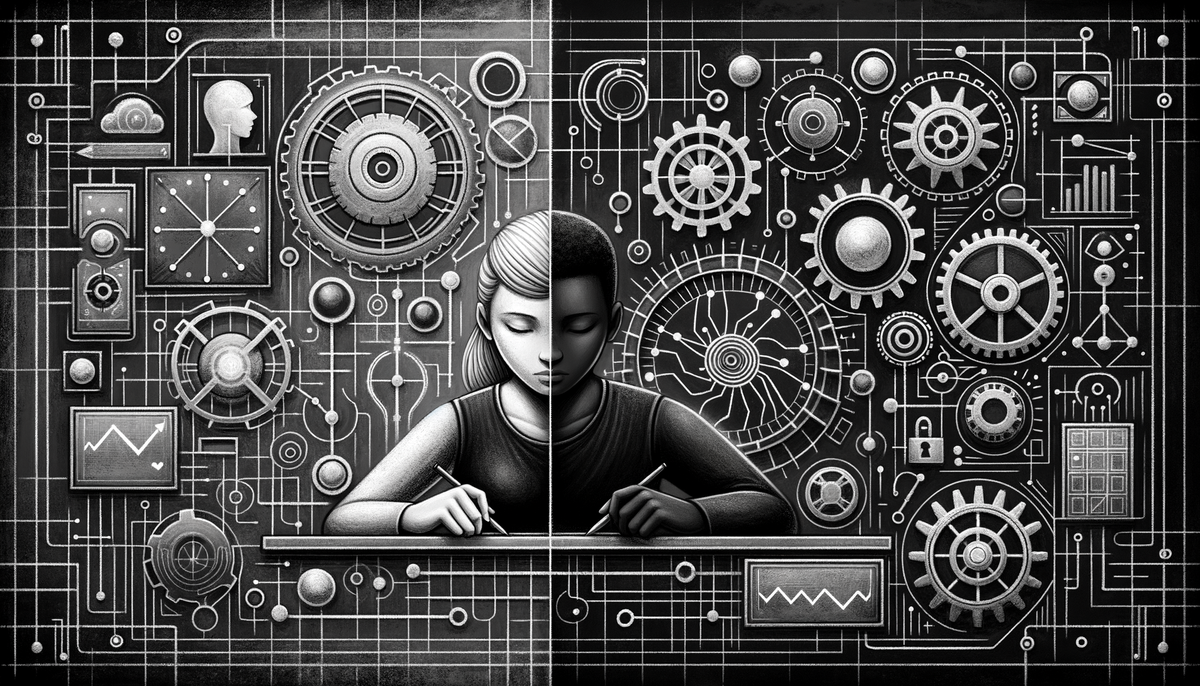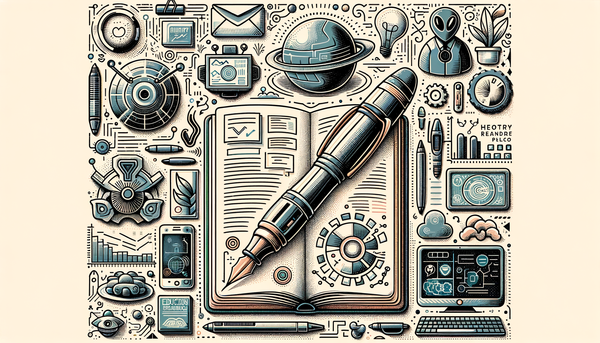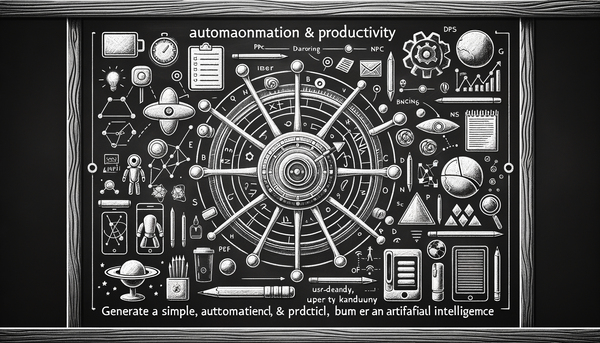China's General AI Agent: Manus and Its Implications

This article delves into the dynamic evolution of artificial intelligence across multiple fronts—from the unveiling of Manus, a groundbreaking general AI agent demonstrating remarkable real-world capabilities, to the transformative shifts within education as exemplified by Turnitin Clarity. It also explores China’s ambitious technology investments and the enduring importance of human oversight in AI systems. Each development signals a profound shift in how AI is conceptualized, deployed, and integrated into our daily lives, setting the stage for a future where innovation, policy, and ethics must coalesce.
The Rise of Manus: A New Era in General AI
In recent months, a new AI marvel known as Manus has captured the attention of the global tech community. Originally developed by a discreet team backed by Chinese investors, Manus is quickly becoming one of the most talked-about general AI agents. Its ability to handle an impressively wide range of complex tasks—from designing personalized websites to planning intricate travel itineraries—marks a significant evolution in artificial intelligence.
The demonstration videos, which have gathered hundreds of thousands of views in a matter of hours, reveal Manus’s capacity to adapt dynamically in real time. Unlike many conventional AI bots that rely on pre-programmed functions and static databases, Manus is engineered to navigate digital landscapes autonomously, learning from its environment and offering tailored outputs on demand. This kind of adaptability resembles the flexibility of human problem-solving and has the potential to revolutionize sectors such as web development, travel planning, finance, and even educational content creation.
Critics and enthusiasts alike have drawn parallels between Manus and other high-profile AI research projects—including those from OpenAI and DeepSeek. Some suggest that when judged by the GAIA benchmark, a third-party metric for general AI performance, Manus may already be outperforming established models. Such comparisons, while not conclusive, underscore the disruptive potential of AI agents that are not just predictive but are solution-oriented in real-world scenarios. You may explore more about these breakthroughs at our Manus AI Agent breakthrough report.
The origins of Manus are enveloped in a mix of secrecy and ambition. The creation of this AI follows the footsteps of previous successful projects, such as the widely popular Monica AI assistant. With a design philosophy that emphasizes both versatility and efficiency, Manus has set a new standard for what AI systems can achieve. Many industry insiders are already forecasting a future in which Manus and similar agents transform industries by taking over mundane or highly complex tasks, hence driving a new wave of productivity and innovation.
Historically, the development of general AI has been likened to the evolution of personal computers, where breakthroughs eventually lead to everyday applications that even non-experts can appreciate. As one industry commentator noted, "Technological revolutions, from the PC era to the smartphone era, have always redefined what is possible in our lives"—this sentiment now finds echoes in the rapid advancements exemplified by Manus.
It’s also interesting to note that the popularity of Manus has reignited debates within the AI community about the balance between innovation and security. Just as historical leaps in computing technology spurred discussions about privacy and surveillance, the advent of a highly capable general AI necessitates a reevaluation of current ethical frameworks. Within the confines of an invitation-only preview, potential users are given a glimpse of what many believe is the future of AI—a future that is as much about trust and transparency as it is about technical prowess.
Refining Educational Tools: Turnitin's Shift with Clarity
The influence of AI is not limited to industries like finance or web development; its impact is also being felt in the realm of education. A notable example is the recent pivot by Turnitin, a well-established plagiarism detection service. Traditionally associated with combating the misuse of AI-generated content, Turnitin is now pioneering a more balanced approach with its new platform, Turnitin Clarity.
Scheduled for launch later this year, Turnitin Clarity represents a key shift in educational technology by allowing students to leverage AI in their academic writing under the careful supervision of educators. While technological innovations have always posed a challenge to traditional academic practices, this new approach aims to integrate AI usage constructively. The tool is designed not only to detect academic dishonesty but also to track the AI’s involvement in student work. It monitors text contributions, typing patterns, and even draft evolution to ensure that AI remains a support tool rather than a crutch.
Such initiatives come at a time when educational institutions are grappling with the duality of AI—a powerful enabler that, if misused, might undermine the development of critical thinking and originality. The New York City Department of Education, for instance, had earlier imposed heavy restrictions on AI tools like ChatGPT to prevent academic cheating. Turnitin Clarity challenges these restrictions by proposing a controlled environment where AI can coexist with traditional learning methods.
The evolving role of AI in education raises important questions about how best to prepare students for a future where technology is ubiquitous. Will AI tools eventually enhance academic creativity, or will they exacerbate issues around dependency and authenticity? These debates echo the perennial discussions on technological disruption in various fields. The current consensus among forward-thinking educators is that AI, when harnessed responsibly, can serve as an invaluable educational resource—one that accelerates learning while also broadening the horizons of what is achievable in an academic context.
Anecdotally, many teachers have shared their experiences with early-stage AI tools, noting that such systems can generate innovative ideas and offer fresh perspectives on traditional subjects. By integrating AI insights into lesson planning or research assignments, educators are finding novel ways to stimulate student engagement while maintaining high academic standards.
China’s Tech Ambitions: A State-Backed Push for AI and Emerging Industries
China’s role in the global tech arena has evolved significantly over the past decade. Recently, the nation announced a bold state-backed fund intended to supercharge innovation across various high-tech sectors, including artificial intelligence, quantum computing, and hydrogen energy storage. With an investment target of nearly 1 trillion yuan (approximately $138 billion) over the next twenty years, this initiative is a clear signal that China is determined to secure a leadership position in future technologies.
At the helm of this venture is Zheng Shanjie, the head of the National Development and Reform Commission, who has confidently stated that external pressures, such as U.S. tech restrictions and global market challenges, are only accelerating China’s resolve to innovate independently. The fund, as reported by CNN, is designed to amalgamate resources from local governments and private investors—a strategy that not only underpins technological developments like Manus but also fosters a broader ecosystem for emerging industries.
This massive injection of funds is expected to catalyze the development of technologies that have far-reaching impacts on everyday life. For instance, advancements in quantum computing could revolutionize fields such as cryptography and logistics, while breakthroughs in hydrogen energy storage might pave the way for cleaner, more sustainable transportation systems. More immediately, the focus on AI is expected to spur innovations that translate into tangible products and services, thereby enhancing domestic consumption as emphasized by policymakers.
Government initiatives like these highlight a trend that is reshaping the competitive landscape of global technology. As domestic consumption in China has traditionally lagged behind other major economies, this infusion of capital is not only a bet on high-tech innovation but also a strategy to stimulate broader economic growth. Prime Minister Li Qiang recently underscored the need to shift attention from export-driven performance to boosting internal markets, a move that is expected to bring a surge in consumer-based technology adoption.
Reflecting on the broader implications, it becomes evident that China’s aggressive investment in technology is not solely about catching up with the West; it’s about charting an independent course in digital innovation. As industrial leader Zheng Shanjie eloquently remarked on a recent panel, "Scenes once confined to science fiction are now part of our daily reality." Such sentiments resonate widely, inspiring both entrepreneurs and established firms to push the boundaries of possibility in high-tech endeavors.
For those interested in following similar technological narratives, our insights on China’s AI advancements provide further details on the interconnected nature of these initiatives.
Embracing Human Oversight: The Enduring Role of "Humans in the Loop"
While automated systems and advanced models like Manus pave the way for a new era in AI, the role of human oversight remains indispensable. A recent discussion highlighted in an Axios article—titled "Humans in the loop make AI work — for now"—emphasizes that despite the impressive capabilities of AI agents, human judgment is critical to ensure ethical and effective decision-making. Having humans as part of the operational process helps mitigate unintended consequences and preserves accountability throughout AI deployments.
In sectors as diverse as education, finance, and healthcare, the human touch provides nuance and context that algorithms are incapable of replicating entirely. For instance, while Manus may autonomously design a website or plan a trip, human reviewers are essential for contexts where empathy, moral choice, and situational awareness are necessary. This perspective is supported by the provocative observation from futurist Gray Scott, who once stated,
"The real question is, when will we draft an artificial intelligence bill of rights?"
Such reflective commentary encapsulates the ongoing tension between technological innovation and ethical considerations.
In educational settings where tools like Turnitin Clarity are gaining traction, instructors are now empowered to monitor AI’s contributions from behind the scenes. This "humans in the loop" approach not only helps maintain academic integrity but also allows for iterative learning processes where both human creativity and machine precision coexist harmoniously. The combined efforts of human adjudication and AI-generated insights can lead to an enriched learning environment that leverages the strengths of both parties.
In industry, the integration of human oversight is also seen as a safeguard against the total automation of critical processes. In many cases, especially under high-stakes scenarios, human expertise can provide essential contextual corrections or nuanced interpretations that a machine might overlook. As such, the idea is not to replace human input but to augment it—ensuring that technological progress does not outpace our capacity to manage its consequences responsibly.
This balanced approach forms a foundational pillar in the discussion on AI ethics and governance. In many respects, the future of AI will hinge not just on technical follow-through but on how well we can embed human values into automated processes. Indeed, the interplay between advanced AI and human oversight will likely be one of the defining characteristics of the coming decade.
Emerging Trends and the Road Ahead in the Age of AI
Current developments in AI suggest a future where the boundaries between human creativity and machine efficiency continue to blur. On one hand, we witness the emergence of robust AI agents like Manus that take on complex, multi-faceted tasks. On the other, there is an increasing push through products such as Turnitin Clarity to ensure that AI’s transformative potential is harnessed responsibly within sectors like education.
This multi-pronged evolution points to a broader ecosystem change: the integration of AI in every layer of modern society. From user-centric applications in web design and travel planning to systemic changes in educational and governmental policies, the journey of AI is both holistic and multifaceted. The interplay of massive financial investments, such as those being rolled out by the Chinese government, and grassroots innovations in educational technology does more than just signal technological progress—it sets the stage for fundamental shifts in how society operates.
The coming years may well be defined by our ability to balance innovation with ethical stewardship. It is a delicate dance that requires ongoing dialogue among technologists, educators, policymakers, and the broader public. One cannot help but recall the stark observation made by A.R. Merrydew: "The demise of the human race rests mainly on the shoulders of stupidity, and the abuse of power in the hands of those we have elected." While this may sound pessimistic, it serves as a cautionary reminder that the responsible deployment of technology is paramount. The wisdom embedded in such reflections encourages us to carefully scrutinize the intersection of power, innovation, and ethics in a rapidly evolving digital landscape.
In this context, initiatives like the development of Manus and the introduction of Turnitin Clarity are not isolated phenomena but are part of a larger narrative of technological revolution. Innovations in high-tech fields supported by state-backed funds illuminate not only the potential for economic and social transformation but also the need for robust regulatory and ethical frameworks. Only by ensuring that human values keep pace with technological developments can we truly harness the benefits of artificial intelligence for the betterment of society.
Moreover, the dialogue around AI governance is likely to intensify as these technologies become more integrated into everyday life. Issues such as data privacy, algorithmic bias, and the socio-economic impacts of automation will remain at the forefront of policy discussions. The challenge for industry leaders and policymakers will be to design frameworks that allow for rapid innovation while safeguarding against unintended consequences.
Case Studies and Real-World Applications
It is one thing to discuss AI advancements in the abstract, but real-world applications bring these debates into sharp relief. For example, Manus is already demonstrating its potential by autonomously navigating complex environments—ranging from financial analytics to the customization of digital content. Imagine a scenario where a small business owner is able to generate a fully functional, aesthetically pleasing website tailored to their unique brand within minutes. Such applications are no longer the stuff of science fiction but tangible realities that enhance productivity and reduce friction in everyday business operations.
Similarly, in the educational realm, Turnitin Clarity may soon empower educators to strike a balance between leveraging AI for academic support and preserving the sanctity of original thought. By enabling teachers to track the evolution of student drafts and monitor AI’s role in content generation, the platform represents a significant step towards incorporating technology in a manner that augments rather than undermines learning.
Across industries, the integration of AI is leading to increasingly personalized and efficient services. Financial institutions, for example, are experimenting with AI to analyze market trends and assist in investment decisions. Although these applications must be managed with caution to prevent over-reliance on algorithmic forecasting, they nevertheless highlight the broad spectrum of AI’s potential. In the world of healthcare, early diagnostic tools powered by AI are showing promise in identifying patterns that may elude even the most experienced practitioners—underscoring the possibility of earlier intervention and more effective treatments.
This real-world impact also validates the significant capital mobilized by governments like China, which see the promise of AI-driven innovations as key to future economic and technological dominance. As a nation that is rapidly transforming its investment strategies, China is laying the groundwork for industries of the future by bridging the gap between state interest and private enterprise. For further exploration of such transformative initiatives, readers can check out our feature on China's New AI Contender Manus and Its Implications.
Policy, Ethics, and the Path to Responsible AI
As advancements in AI continue to accelerate, so too does the need for robust policy frameworks and ethical guidelines. Balancing innovation with responsible oversight is essential, particularly in sensitive areas such as education, healthcare, and finance. Governments and industry leaders globally are beginning to draft discussions on regulatory measures that might, in the near future, resemble an "artificial intelligence bill of rights."
These considerations are especially significant in light of the evolving role of tools like Manus and Turnitin Clarity. On one hand, cutting-edge AI solutions promise tremendous efficiency gains and novel applications; on the other, they raise critical questions regarding data security, individual privacy, and the potential for misuse. The debate is not new—historically, every technological breakthrough has eventually necessitated a recalibration of societal norms and legal frameworks. What differentiates today’s landscape is the urgency and scale at which these discussions must occur.
For policymakers, the challenge lies in crafting legislation that is flexible enough to accommodate rapid technological change while firm enough to protect the public interest. In this respect, cross-industry dialogue and international cooperation become paramount. The evolving conversation includes thought leaders and experts whose contributions, ranging from academic research to industry white papers, are shaping the contours of tomorrow's regulatory environments.
This ongoing debate serves as a reminder that while AI is a tool of immense potential, its integration into society must be approached with humility and foresight. The enduring role of human judgment ensures that, despite the mechanical precision of advanced algorithms, the core values of accountability and ethics remain central to any technological endeavor.
Further Readings and Reflections on the AI Revolution
As we continue to march towards an AI-dominated future, it is vital to remain informed and critically engaged with these transformative developments. The recent surge of interest in Manus, Turnitin Clarity, and China's state-backed tech initiatives reflects a broader shift in how society is reconceiving the role of technology. Whether in reimagining everyday tasks or reshaping entire industries, the foundational theme remains clear: Artificial intelligence, when combined with responsible human oversight and strategic investment, holds the promise of redefining our world.
For those who wish to dive deeper into these topics, consider exploring some of the following resources:
- Another DeepSeek Moment? General AI Agent Manus Shows Ability to Handle Complex Tasks – Yahoo Singapore News
- Turnitin Clarity and the Transformation in Educational AI – Business Insider
- China Announces High-Tech Fund to Grow AI and Emerging Industries – CNN
- China's AI Advancements – AI.Biz
Reading and reflection are crucial as we navigate this frontier—after all, the balance between progress and prudence will determine the trajectory of AI in the years to come. In embracing both the promise of automation and the sanctity of human judgment, we edge closer to an era where technology is as ethical as it is innovative.



